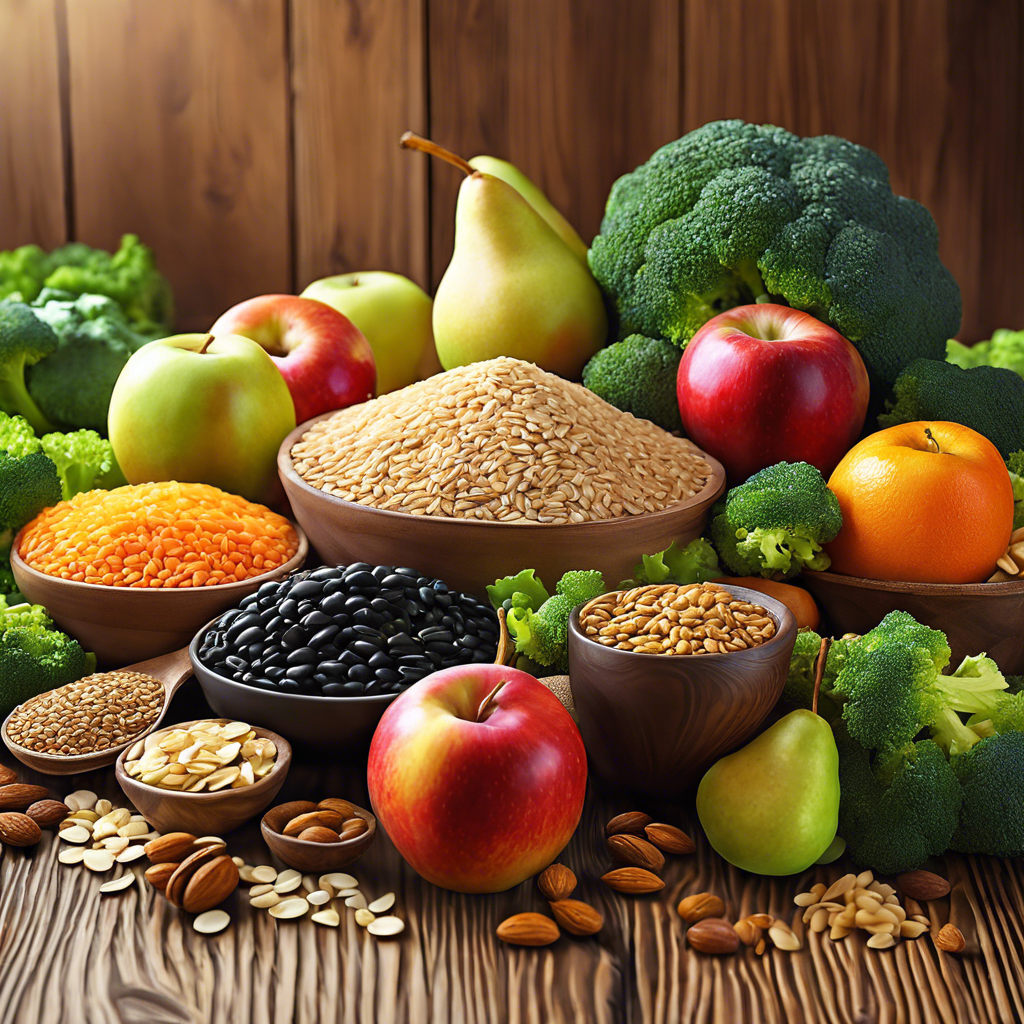Dietary fiber is an essential component of a healthy diet, yet many people do not consume enough of it. This blog post will delve into what dietary fiber is, the national average fiber intake, recommended levels of consumption, the different types of fiber, and practical ways to incorporate more fiber into your daily meals.
What is Dietary Fiber?
Dietary fiber encompasses the indigestible parts of plant foods that pass through the digestive system. Unlike other carbohydrates, fiber is not broken down by the body’s digestive enzymes. Instead, it plays a crucial role in maintaining gut health, regulating blood sugar levels, and reducing the risk of chronic diseases such as heart disease, diabetes, and certain types of cancer.
Fiber can be classified into two main categories: soluble and insoluble fiber.
Soluble Fiber
Soluble fiber dissolves in water to form a gel-like substance. It is found in foods such as oats, beans, lentils, apples, and citrus fruits. Soluble fiber can help lower blood cholesterol levels and stabilize blood sugar levels by slowing the absorption of sugar.
Insoluble Fiber
Insoluble fiber does not dissolve in water and adds bulk to the stool, aiding in digestion. It is primarily found in whole grains, nuts, seeds, and the skins of fruits and vegetables. Insoluble fiber helps prevent constipation and promotes regular bowel movements.
National Average Fiber Consumption
According to the U.S. Department of Agriculture (USDA) and various health organizations, the average American adult consumes about 15 grams of dietary fiber per day. This amount falls short of the recommended intake, which is 25 grams for women and 38 grams for men. Children and adolescents also have specific fiber intake recommendations based on their age and caloric needs.
The low fiber consumption can largely be attributed to the prevalence of processed foods in the American diet, which often lack adequate fiber content. Many people opt for refined grains and sugary snacks, which contribute little to dietary fiber intake.
Recommended Fiber Intake
The Dietary Guidelines for Americans recommend the following daily fiber intake:
- Women: 25 grams
- Men: 38 grams
- Children: Varies by age, generally 19 to 25 grams
These recommendations aim to ensure that individuals receive adequate fiber for optimal health and to prevent chronic diseases.
The Difference Between Fibers
Understanding the differences between soluble and insoluble fiber is crucial for making informed dietary choices. Each type of fiber offers unique health benefits.
Health Benefits of Soluble Fiber
- Heart Health: Soluble fiber can help reduce LDL cholesterol levels, which lowers the risk of heart disease. Foods rich in soluble fiber include oats, barley, nuts, seeds, beans, lentils, peas, and some fruits and vegetables.
- Blood Sugar Control: By slowing down digestion and the absorption of sugar, soluble fiber can help maintain stable blood sugar levels, making it beneficial for individuals with diabetes.
- Weight Management: Foods high in soluble fiber can contribute to feelings of fullness, reducing overall calorie intake.
Health Benefits of Insoluble Fiber
- Digestive Health: Insoluble fiber adds bulk to the stool, which helps to prevent constipation and maintain regular bowel movements.
- Colon Health: A diet high in insoluble fiber has been linked to a lower risk of developing diverticular disease and colorectal cancer.
- Weight Management: Like soluble fiber, insoluble fiber can promote feelings of fullness and help control appetite.
How to Get Fiber in Your Daily Diet
Incorporating more fiber into your diet can be simple and enjoyable. Here are some practical tips and strategies to increase your fiber intake:
1. Choose Whole Grains
Opt for whole grains instead of refined grains. Look for products labeled “100% whole grain” or “whole wheat.” Examples include:
- Whole grain bread
- Brown rice
- Quinoa
- Barley
- Oats
2. Add Beans and Legumes
Beans and legumes are excellent sources of both soluble and insoluble fiber. Incorporate them into your meals by:
- Adding black beans or chickpeas to salads
- Using lentils in soups and stews
- Making bean-based dips like hummus
3. Snack on Nuts and Seeds
Nuts and seeds are not only high in fiber but also provide healthy fats and protein. Keep these snacks on hand:
- Almonds
- Chia seeds
- Flaxseeds
- Walnuts
- Sunflower seeds
4. Load Up on Fruits and Vegetables
Fruits and vegetables are rich in fiber, vitamins, and minerals. Aim for a variety of colors and types. Some high-fiber options include:
- Raspberries
- Pears (with skin)
- Apples (with skin)
- Carrots
- Broccoli
- Artichokes
5. Gradually Increase Fiber Intake
If your current fiber intake is low, gradually increase it to avoid digestive discomfort. Add one or two high-fiber foods to your meals each day and drink plenty of water to help with digestion.
6. Read Nutrition Labels
When shopping, read nutrition labels to find foods high in fiber. Aim for products containing at least 3 grams of fiber per serving.
7. Incorporate Fiber-Rich Breakfast Options
Start your day with a fiber-rich breakfast. Consider:
- Oatmeal topped with fruits and nuts
- Whole grain cereal with milk or yogurt
- Smoothies with spinach, fruits, and chia seeds
8. Experiment with Fiber Supplements
If you’re struggling to meet your fiber needs through food alone, consider fiber supplements. However, it’s best to prioritize whole foods for their additional nutrients.
Conclusion
Dietary fiber is an essential part of a balanced diet, contributing to overall health and well-being. Understanding the different types of fiber and their benefits can help you make informed dietary choices. By incorporating more whole grains, fruits, vegetables, legumes, and nuts into your meals, you can easily increase your fiber intake and improve your health. Remember to aim for the recommended daily intake of fiber to reap the many benefits it offers.
